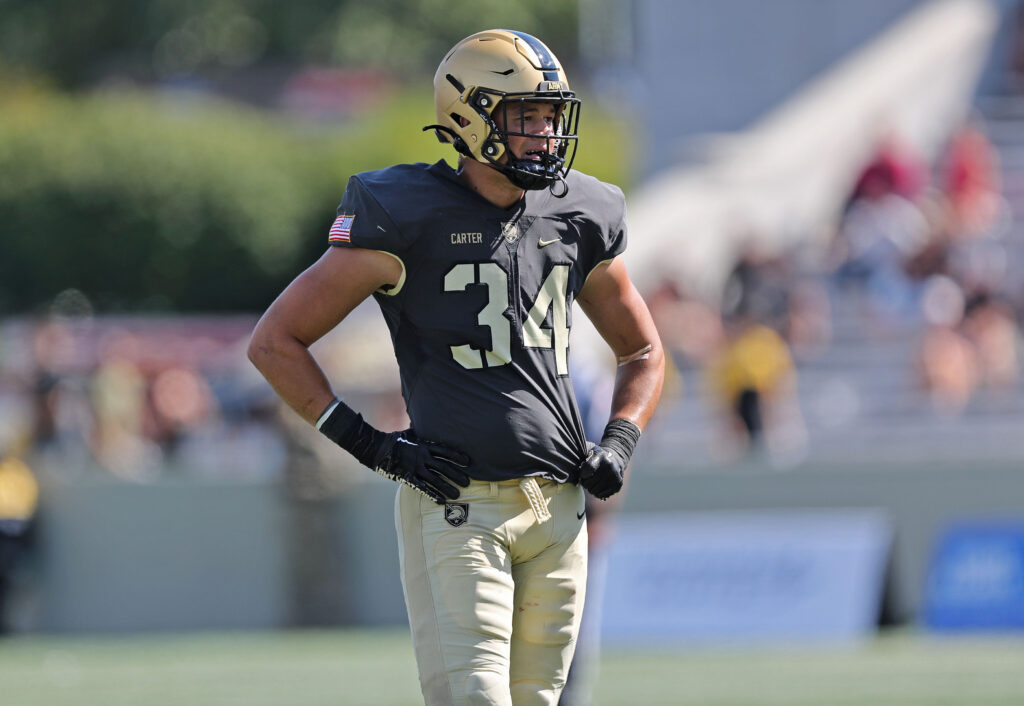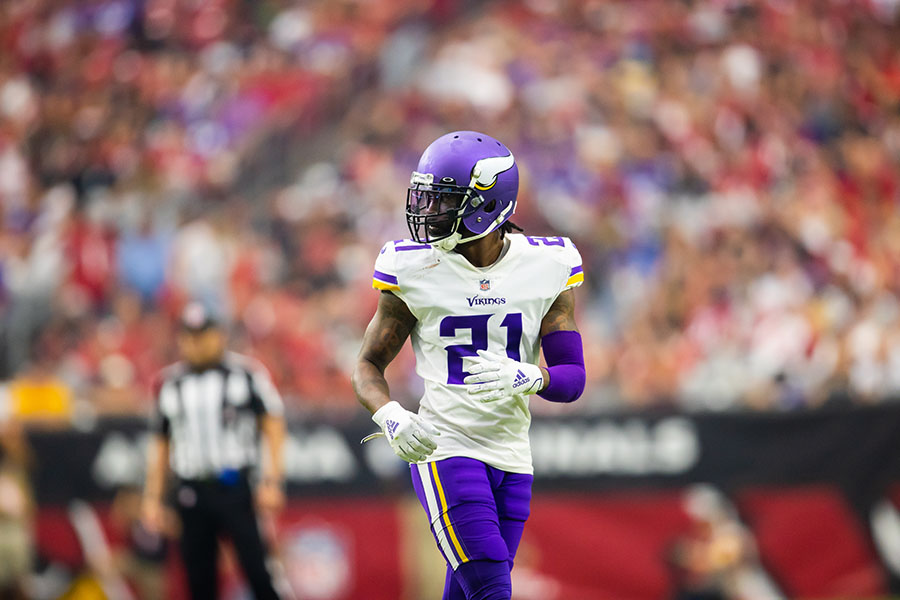EAGAN — At Minnesota Vikings rookie minicamp, 42 players took the field at TCO Performance Center to participate largely in individual drills and a little seven-on-seven action. Only six of them were drafted in late April. The rest were either undrafted free agents or tryout players.
Within that group the odds of making the team, even in a practice squad capacity, are pretty thin. But two players on the UDFA list have the Vikings very intrigued: Pass rusher Andre Carter II from Army and Cincinnati linebacker Ivan Pace Jr.
Both players were projected by NFL.com’s Lance Zierlein to land in the fifth or sixth round and some draft analysts had them ranked even higher. According to the website Mock Draft Database, the draft analysis universe had Carter II as the 104th player in the draft and Pace Jr. 140th.
Both have the college numbers to justify being called “steals.” In 2021, the 6-foot-6 Carter II racked up 14.5 sacks, picked off a pass and forced four fumbles.
“He was under consideration for us to be drafted a couple times in the draft….we felt like we gained an extra draft pick with him,” head coach Kevin O’Connell said. “The length, the athleticism, his production. When you watch him on tape you see a guy that is arrow-up and going to ascend.”
Pace Jr. had 9.0 sacks of his own while also playing one-fourth of his snaps in coverage. PFF graded him 92.8 out of 100 overall, the highest in college football in 2022, just ahead of Iowa first-round pick Jack Campbell.
“He was a major priority for us,” O’Connell said. “Felt like his tape was one of the best [among] linebackers in the draft. He’s physical, he gets off blocks and is a tackling machine…I see a lot of upside for him.”
Of course, the natural next question is why these players were not picked. The NFL took three punters rather than taking a shot on Carter II or Pace Jr.
For the lanky pass rusher, it could be tied to a drop in production from 2021 to 2022. He went from the second most sacks in the nation to just 3.5 sacks in 10 games. He went from producing more pressure in ‘21 than Kansas City’s second-round pick George Karlaftis to ranking 149th in QB pressures (per PFF).
“A lot of times a dynamic pass rusher can have a lot of production but what happens? They get circled in the scouting report…I’m sure there’s things he’s looking to improve to add to his pass rush…[Brian Flores] has a great plan for him and I can’t wait to see him get a ton of reps in the preseason.”
Interestingly Carter’s PFF grade only sunk from 82.3 to 77.3, which may back up O’Connell’s explanation that opponents were putting their entire offensive gameplans together to stop Army’s NFL-caliber star. But that isn’t the only reason he dropped. After all, the Vikings aren’t the only team that could factor chips and double teams into their evaluation.
“Carter needs to play with more skilled hands and inject a little more glass into his on-field diet in order to meet force with force when the run game comes downhill at him,” Zierlein wrote.
His draft profile, however, is optimistic about his chances as a developmental player, quoting one AFC evaluator saying he will significantly gain strength in an NFL building.
“Carter might need a longer runway to meet his potential, but if does his pass-rush homework, he could take a substantial leap forward as an odd or even front edge rusher by Year 3,” Zierlein wrote.
For Pace Jr., size and athleticism is the most likely explanation for why he slid off draft boards. At 5-foot-10, 231-pounds and with 30-inch arms, he will instantly be one of the smallest players at his position in the NFL if he makes it. There are zero linebackers under 5-foot-11 who saw game action last season and only six at 5-foot-11. He also didn’t light up the Combine athletically, only running a 4.62 40-yard dash and benching 22 reps.
To put perspective on his athletic profile, former Viking UDFA success story linebacker Eric Wilson (coincidentally also from Cincinnati) was 6-foot-1 and ran a 4.53 40-yard dash with elite marks in other areas like 10-yard split and vertical jump.
“It is hard not to love Pace’s game tape, but his lack of length and speed could create inconsistencies at the next level,” Zierlein wrote.
One thing we know about Carter II and Pace Jr. joining the Vikings is that they will get plenty of opportunity to prove themselves as worthy UDFA pickups during the summer. Last year the Vikings barely played any starters during preseason, opening the door for all challengers to see game action and stand out.
The difference with these two prospects is that Carter II may take a few years before he develops into a camp standout, where as Pace Jr. needs to shine right away in order to have a chance. If either of them clicks at any time, they will bolster an especially small draft class.









